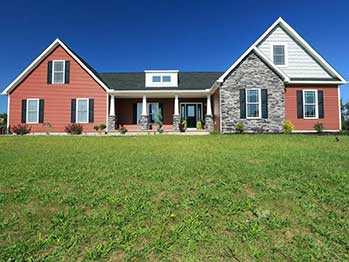Investing in real estate is a significant decision that involves careful consideration of various factors, including property type, location, market trends, and your financial goals. When it comes to modular homes, there are both advantages and considerations to take into account when evaluating their suitability as an investment property. Let's explore some key points to...
Read MoreModular Homes VA Blog
We build beautiful modular homes in our award-winning fashion that not only over-delivers on the quality of construct, but in a procedural manner that you will celebrate for a lifetime. Home building is often described as one of the most stressful processes to negotiate, however, that is not the case here at Tidewater Custom Modular...
Read MoreModular homes are often considered to be energy efficient. Modular homes are built in a factory environment in sections or modules, and then transported to the site for assembly. Because of the controlled factory environment, there are several factors that contribute to their energy efficiency: Precision Construction: Modular homes are constructed with precision machinery, ensuring...
Read MoreModular homes is simply the most economically viable option in today’s tough economic conditions. Your choice of home construction is impacted by numerous that include (but certainly not limited to) local housing market conditions, interest rates, financial circumstances, and delivery expectation. Your friends here at Tidewater Custom Modular Homes would like to share a number...
Read MoreIt is becoming an increasingly popular choice for homebuyers. If you are looking for a quick and customizable solution to your housing needs, modular homes are the answer. It is built off- site in a controlled factory environment which provides a number of benefits to homebuyers. Using modular homes is more efficient without reducing the...
Read MoreFrom framing, to finishing, appliances, and design, we are committed to delivering the absolute most well-rounded home that your house building dollar can purchase. You will enjoy the light and airy designs. It is very inspiring to see houses that are smaller but perfectly executed. High ceilings and floor to ceiling windows are one of...
Read MoreAre you considering a new home and interested in the unique charm of a Cape Cod style modular home? Look no further! Here are three reasons why you'll love a Cape Cod style modular home built by Tidewater Custom Modular Homes: Timeless Aesthetic Appeal: The Cape Cod style is renowned for its timeless beauty and...
Read MoreMaximizing space in a modular home is essential for creating an efficient and comfortable living environment. Here are some additional tips from Tidewater Custom Modular Homes to help you make the most of the available space: Optimize furniture arrangement: Carefully plan the placement of furniture to optimize the flow and functionality of each room. Consider...
Read MoreRaising a family in a modular home is a unique and rewarding experience. While there are some considerations specific to modular homes, many of the general principles of raising a family in any home still apply. Here are some tips from Tidewater Custom Modular Homes to help you make the most of your modular home...
Read MoreYour budget is a huge consideration when building your custom modular home. It's smart to explore all your options and strategically decide how best to put your hard-earned home buying dollar to work. We help you do that. When comparing modular home prices, here are some steps you can follow: Determine your requirements: Before comparing...
Read More











